Remote options, Dockmate and Yacht Controller offer new solutions
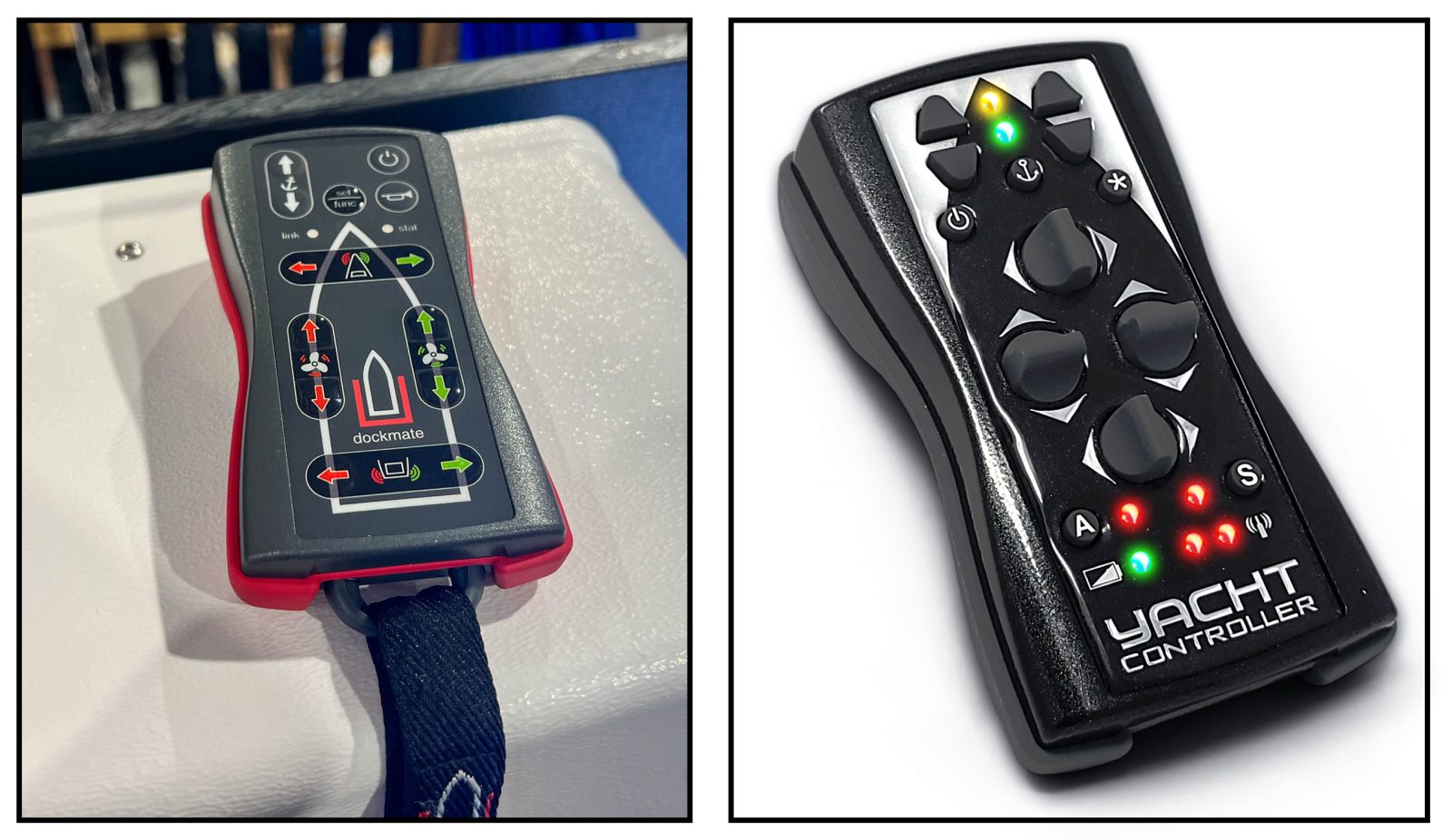
For many years Yacht Controller was just about the only game in wireless docking remotes for boats. But, starting roughly four years ago, Dockmate brought their products to the United States. Dockmate’s software configurable, two-way remotes offered more configurability than Yacht Controller’s. But now, Yacht Controller has introduced Maixmo with several features not available from Dockmate and Dockmate has introduced Red, a full remote system at a previously untouchable price point.
Dockmate Red
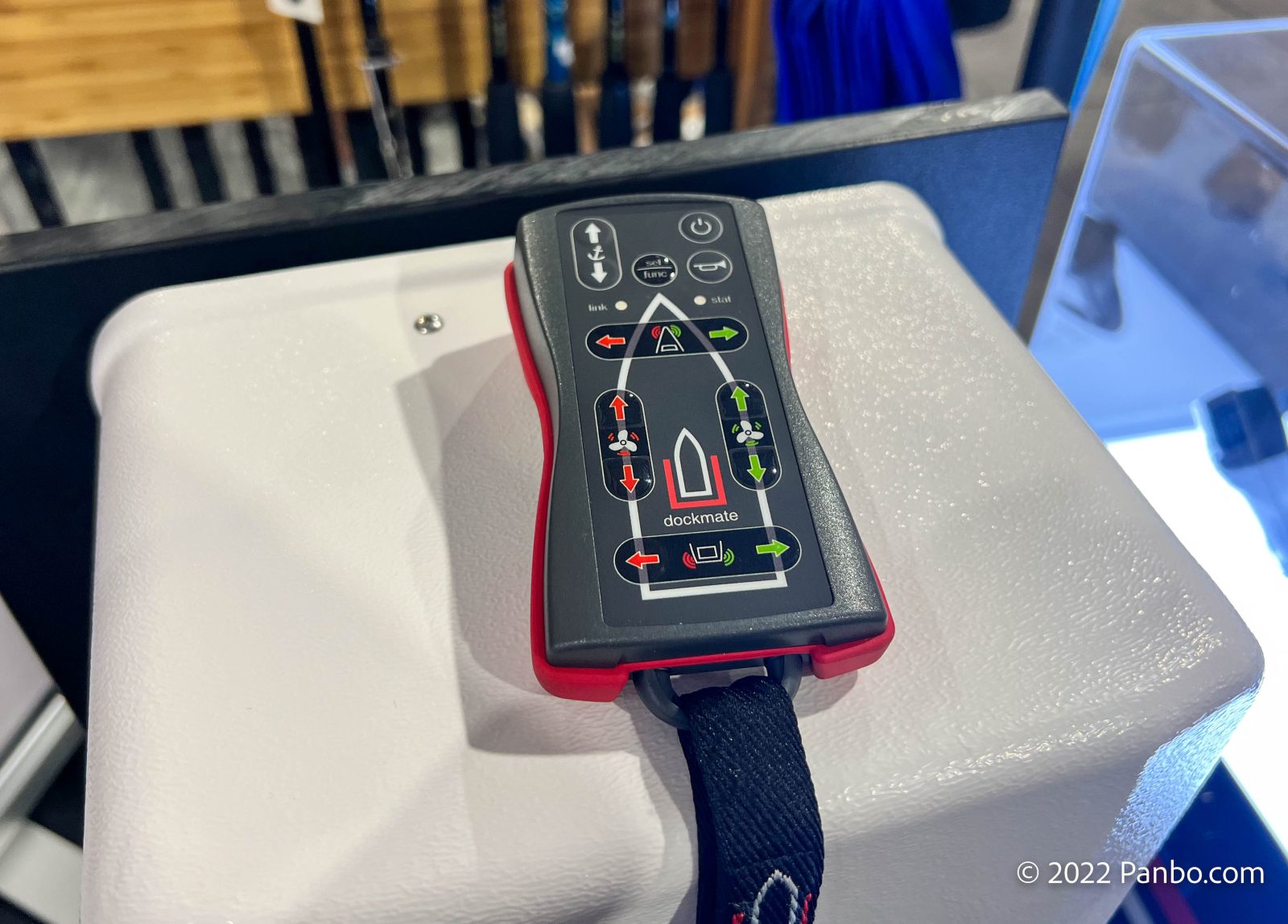
Wireless remotes for yachts typically start with a five-figure price tag for the equipment and installation. Dockmate’s Red lists for $8,995 with installation included. That’s a pretty big reduction in price and could make Red a more palatable option for boaters previously priced out of a wireless remote.
Red is more limited than previous Dockmate systems. It offers control of two engines, at idle speed only, a bow and stern thruster, horn, and optional anchor control. But Red doesn’t offer the detailed configuration options of the Twin and Twist remotes.
Although Red doesn’t offer some of the software tricks like Soft Docking and Throttle+, it does offer many of the benefits of their other remotes, including:
- Two-way communications between the remote and base unit
- Control of one or two engines
- Support for bow and stern thrusters (on/off only, no proportional control)
- Wireless charging of the remote on a Qi charger
- Optional anchor windlass control
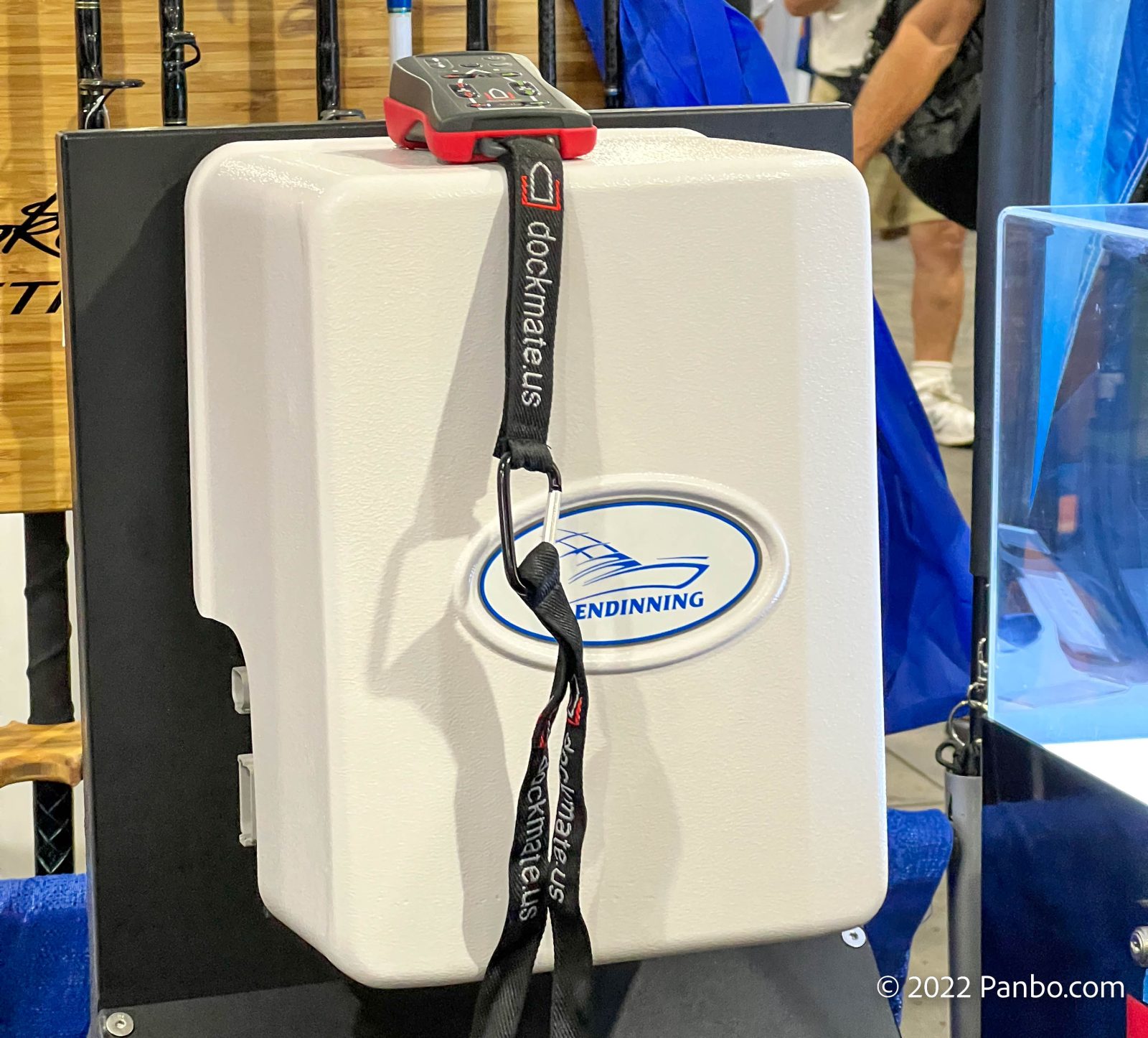
But, all those benefits require electronically controlled and shifted transmissions. Typically, that’s meant that boaters with mechanical transmission controls haven’t been able to take advantage of a remote without investing in a full replacement of their boat’s control system. That’s a project that can easily run to $20,000 or more. Dockmate has teamed up with Glendinning, one of the leaders in control system refits, to offer an electronic transmission control unit.
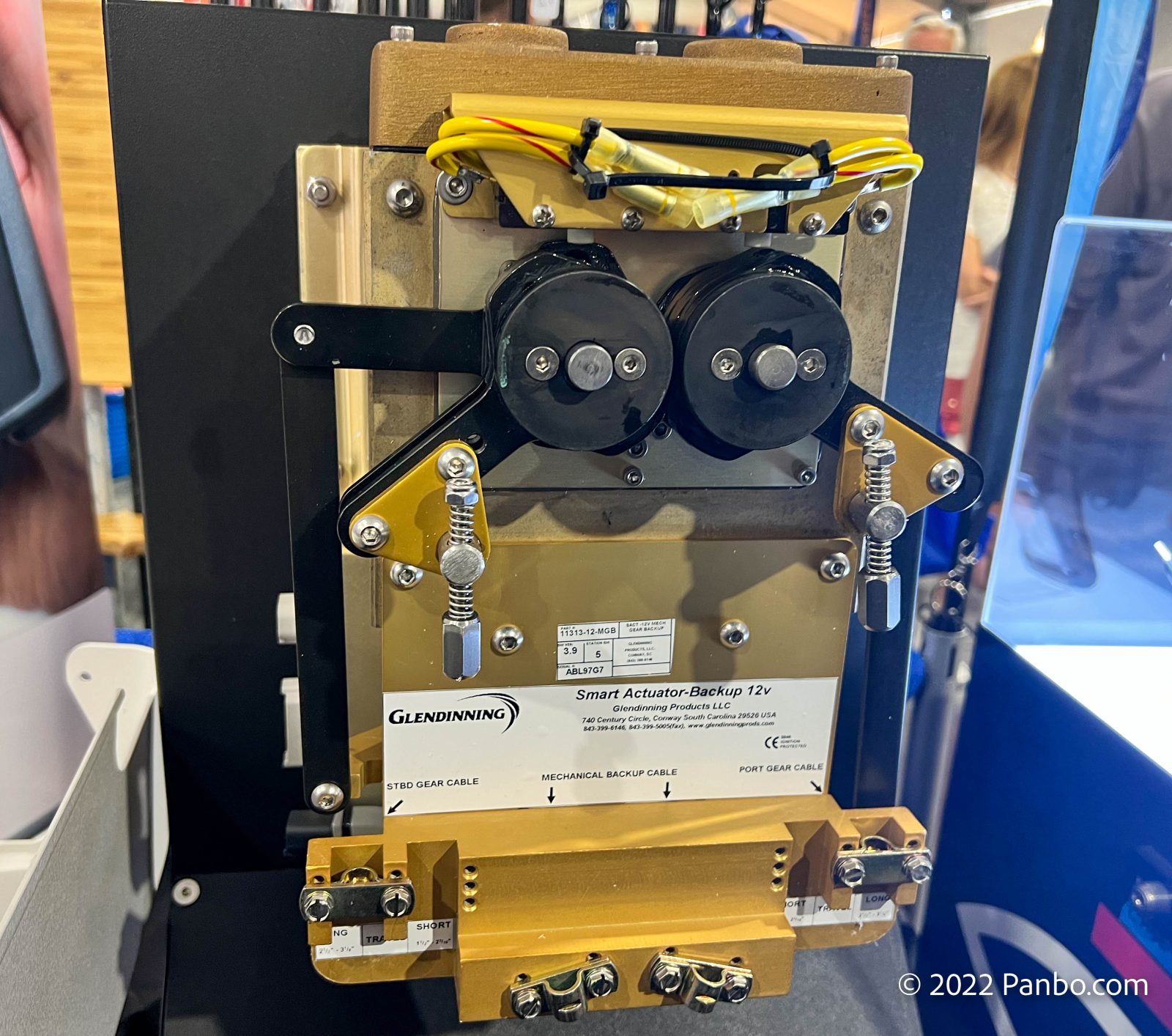
The Dockmate Red M2E is designed to work alongside mechanical and Hynautic control systems. By not replacing all the existing controls, Dockmate keeps costs down. The Red M2E system lists for $9,995, but unlike the basic Red system, that price doesn’t include installation. However, the M2E is also Dockmate’s only DIY installable option. Because everything arrives pre-configured, an able boat owner can do the install themselves.
The system consists of the Dockmate Red mentioned above, plus a Glendinning Smart Actuator, Central Processor, and 60-foot backbone cable. Those components combined allow boats to be fitted with a remote for less than half the previous cost of entry.
Yacht Controller Maximo
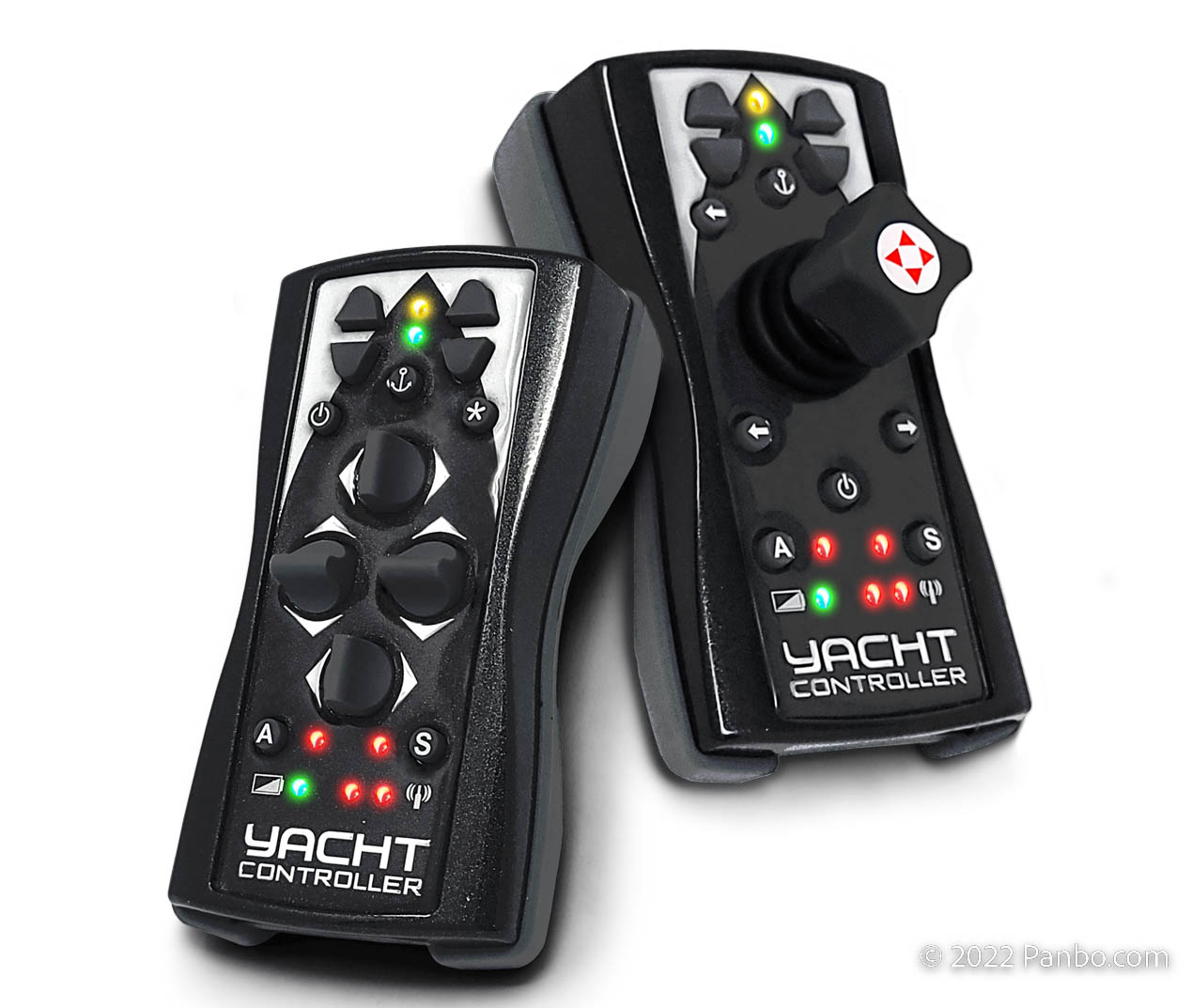
At first glance, Yacht Controller’s Maximo remotes look very similar to their existing units. But digging a little deeper reveals some big differences under the hood.
Until now, the comparison between Yacht Controller’s products and Dockmates wasn’t a very fair fight. Yacht Controller has been using one-way communications — remote to the receiver only — and minimal customization and tuning of the remote. In contrast, Dockmate’s Single, Twin, and Twist remotes have long offered two-way communications and extensive, detailed customization and tuning of the system.
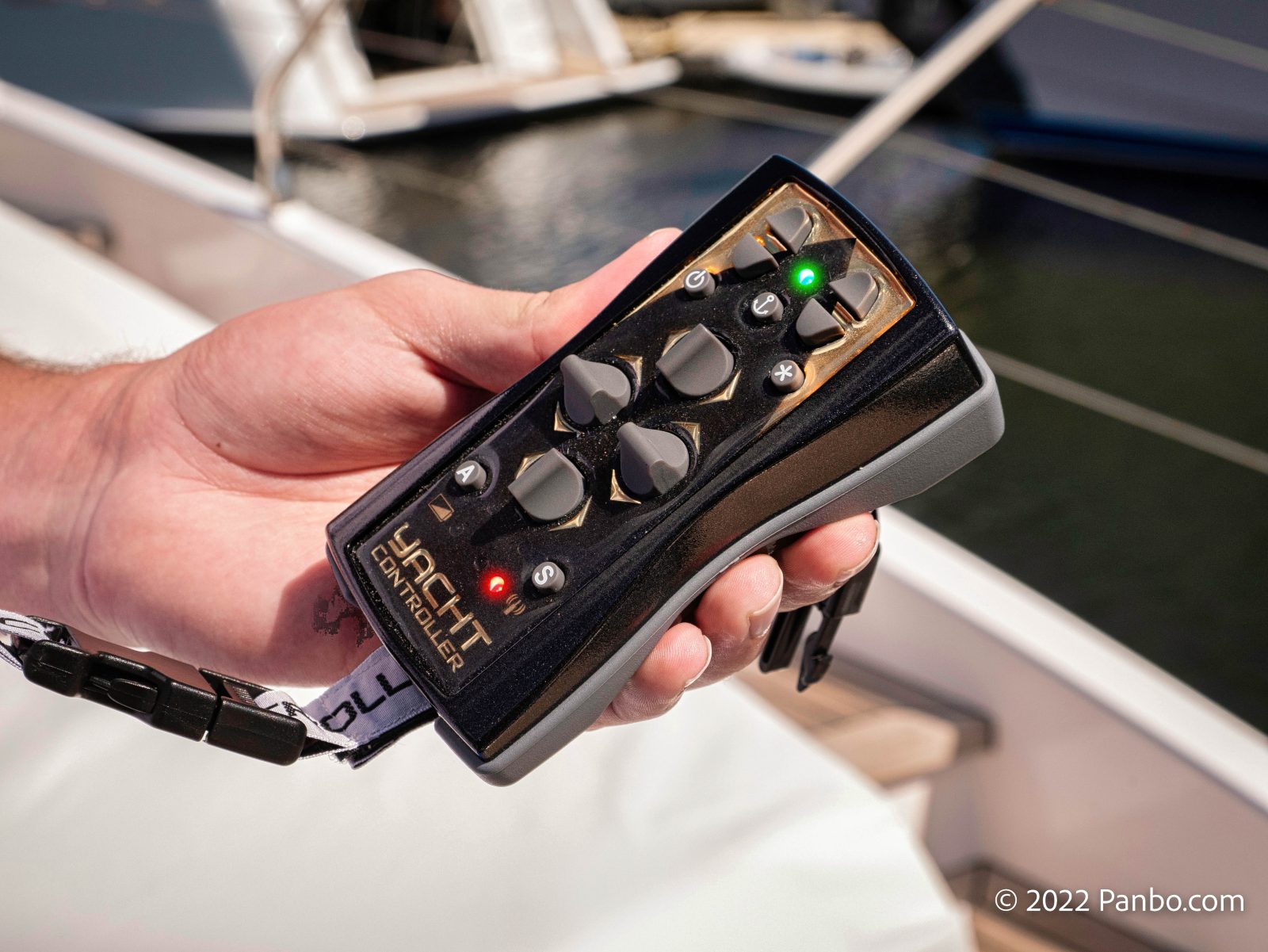
Yacht Controller and Dockmate have competed hard in the last couple of years. For many years, Yacht Controller effectively had no competition offering docking remotes for yachts in the United States. Dockmate hit the U.S. market and changed that. They offered a more feature-rich product at a lower price point. Well, now Yacht Controller has a product that looks ready to compete on features and price as well.
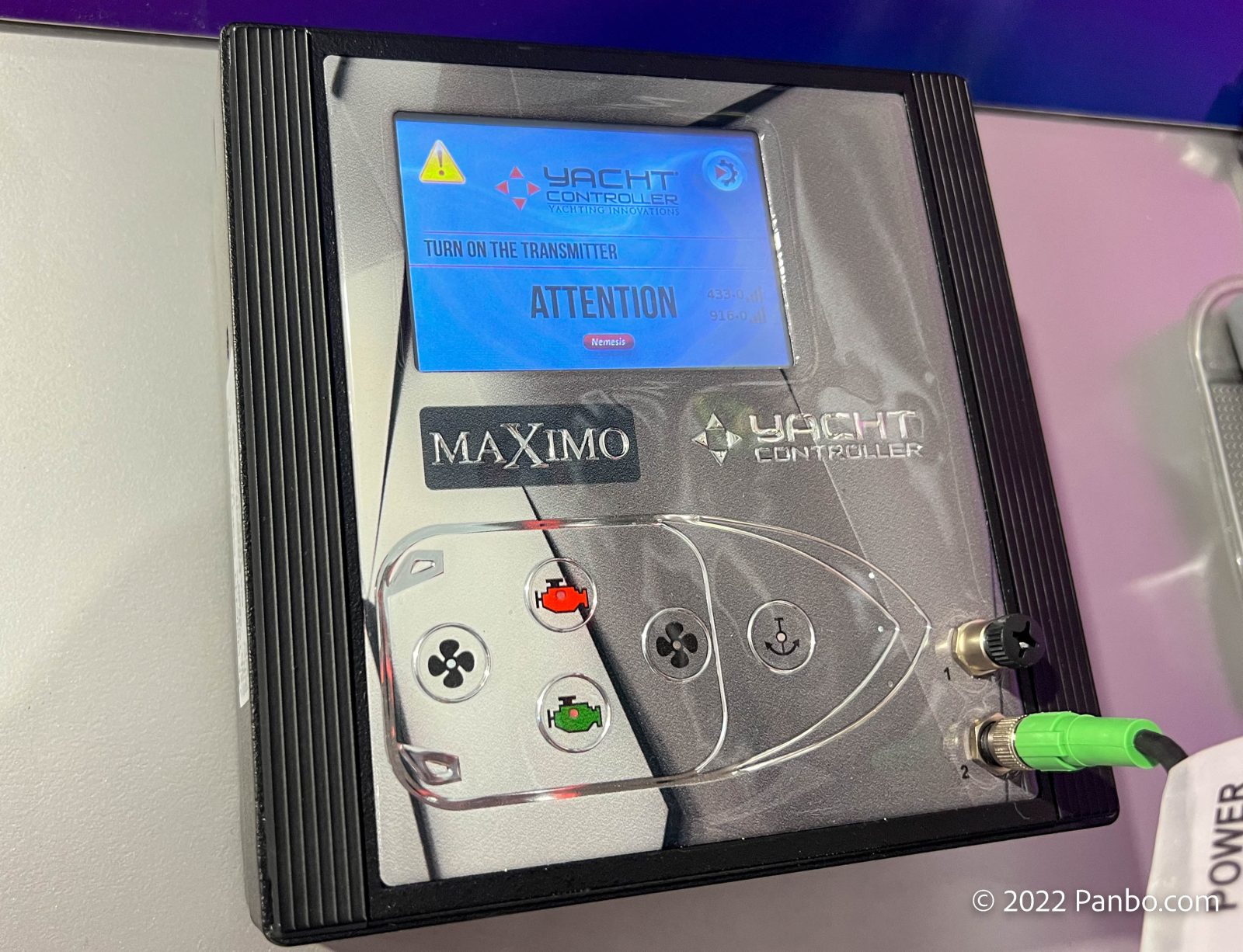
Until Maximo, Yacht Controller has relied on a one-way link from the remote to the base station, though over two separate frequency ranges. In practice, this means that if the commands from the remote aren’t reaching the base station for any reason, the operator isn’t notified.
Previous Yacht Controllers have been basically on-and-off control units without any real intelligence. So, when a boater twisted the joystick on their remote, one engine went into forward, and one into reverse. But, often, propellers are more efficient in forward than reverse. So, although the desired maneuver might be a stationary pivot, the actual maneuver would be more of a forward twist.
Since their introduction into the U.S. market, Dockmate has improved boaters’ experience using its software to compensate for these differences. So, instead of both engines going into gear at the same RPMs, Dockmate has the capability of giving the reverse engine more RPMs than the forward engine. Similar adjustments for bow and stern thrusters with asymmetrical effectiveness keep the boat moving as the boater expects. Previous Yacht Controller remote systems didn’t have this capability, but Maximo closes this important gap.
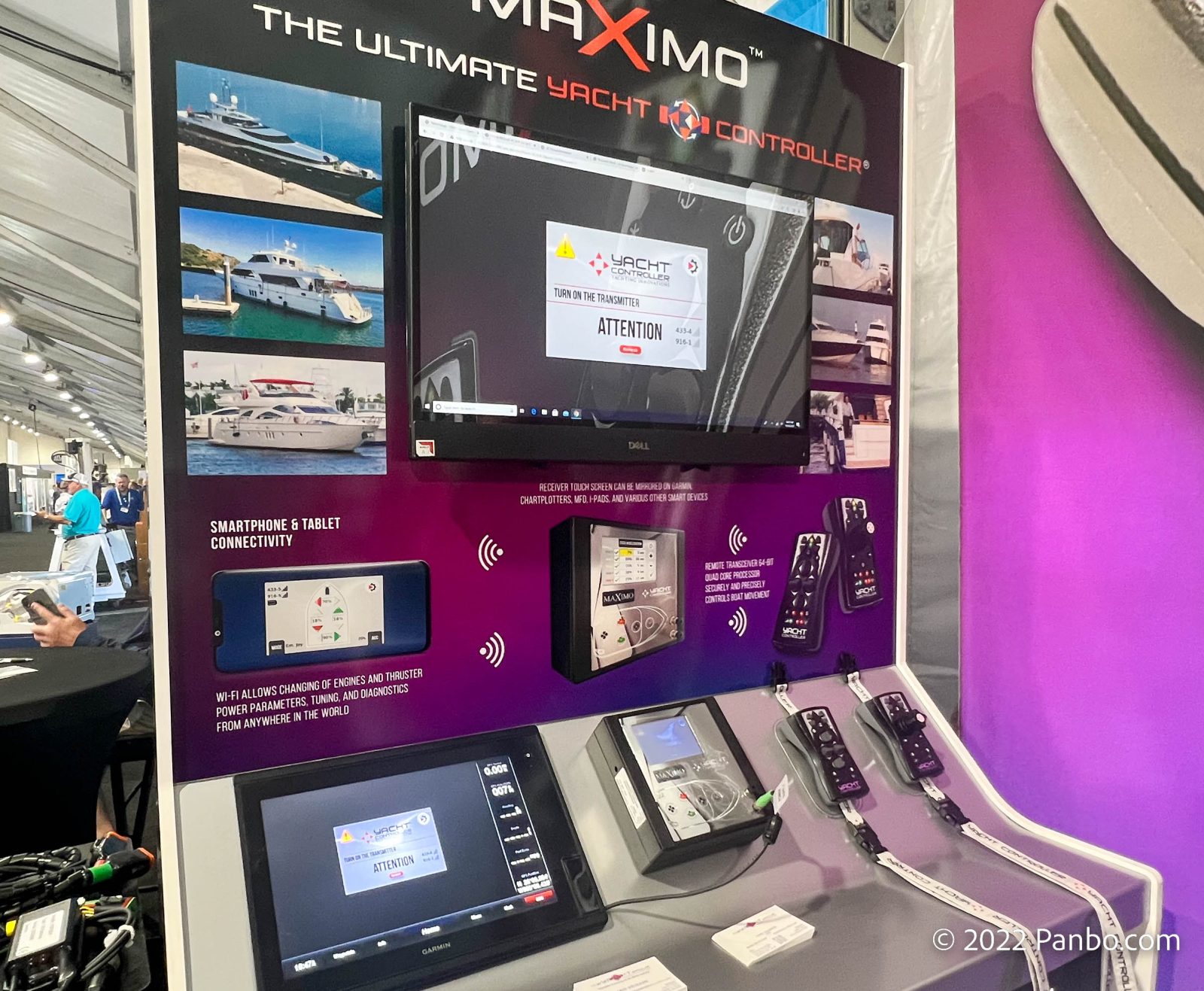
Yacht Controller says Maximo offers the same types of flexibility, allowing the system to be tuned to a particular boat and the boat owner’s preferences. But, as you might expect, Yacht Controller hasn’t just caught up with Dockmate; they’ve added several additional functions that will likely prove helpful.
Maximo supports up to five different configuration profiles. So, preferences, including throttle response, thruster ratios, and more, are grouped, and up to five different profiles are stored in the system. These profiles are well suited for different operators with different preferences or varying environmental conditions. I can certainly see using one profile in calm winds and minimal current and a second, higher-powered config for more challenging circumstances.
Neither Yacht Controller nor Dockmate allows end users to configure most engine and thruster control parameters. That’s because a bad setting can prove both dangerous and potentially damaging to the boat’s propulsion equipment. So, typically changing settings requires a visit from an authorized technician. But Maximo can use a WiFi-based internet connection — including a hotspot from your phone — and a VPN connection to allow Yacht Controller techs to configure and upgrade the system remotely.
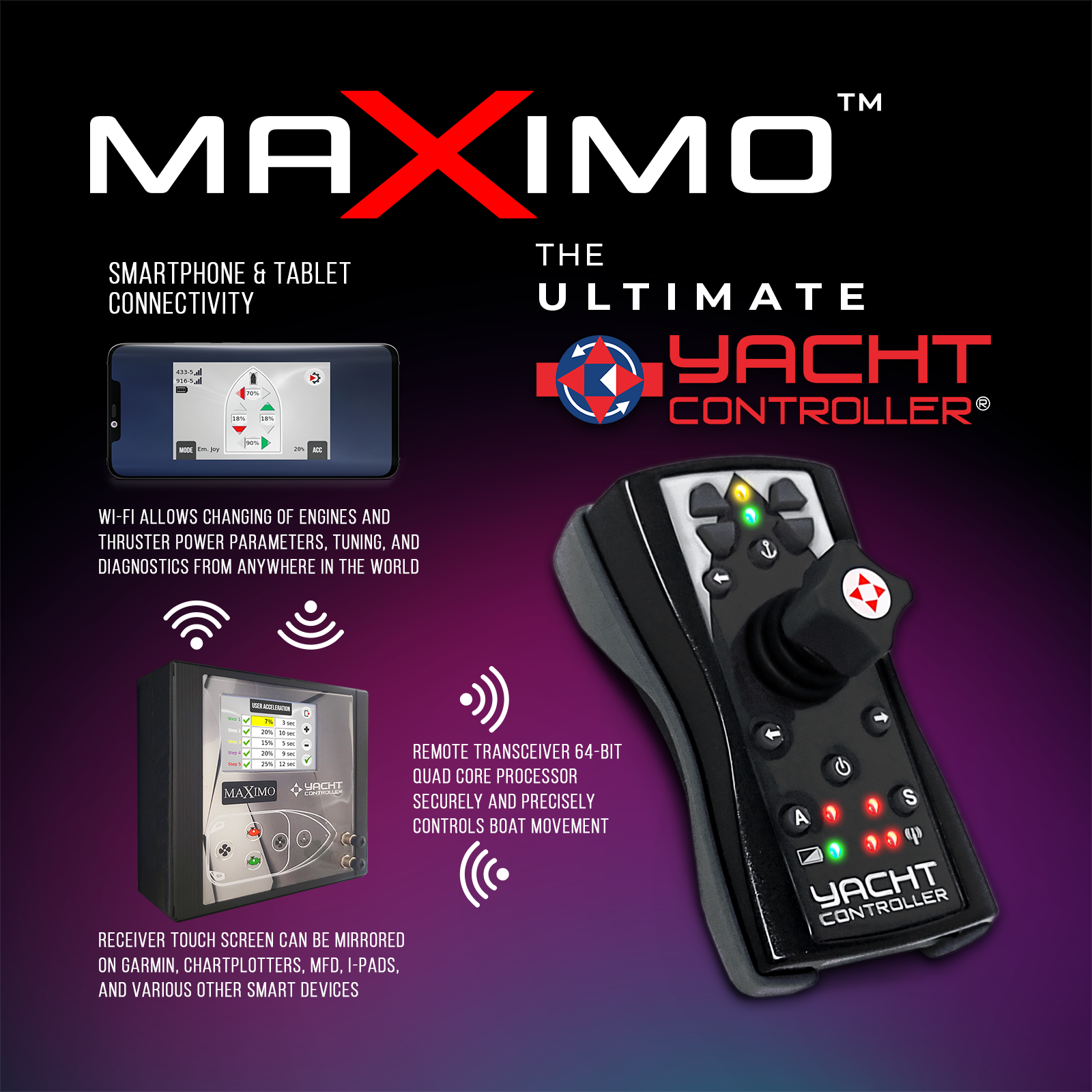
Additionally, Maximo’s control unit has a display that shows system status, control inputs, and other information. A WiFi-connected phone or tablet can also display the Maximo interface. Plus, Garmin and Raymarine MFDs also display the interface using a WiFi or Ethernet connection.
Yacht Group reports a typical install on a 60-foot, twin-engine boat with bow and stern thrusters and a windlass would range between $16,000 and $18,000. Yacht Controller’s full range includes options ranging from $9,000 to over $25,000.
Final thoughts
Both Dockmate and Yacht Controller’s new products offer boaters more choice and value in docking remotes. These two companies have competed hard at times, but from my perspective, they’re pushing each other to deliver more to the boater. And that’s a good thing for all of us!













Ben thank you for the new story write-up. Healthy competition will always serve the consumer best! Maximo has now again raised the bar in wireless control and with our new CPU 64bit Quad Core processor, we open the door to many exciting features to come! I wanted to add that the Yacht Controller enjoys working relationships with some of the largest engine and transmission manufacture’s, some of which have exclusively licensed and/or certified Yacht Controller as an authorized wireless control protecting your engine and transmission warranties. You can click on this link https://www.yachtcontroller.com/oem/ to read more on these certifications as this is extremely critical for those with new vessels and/or vessels with current active warranties for the engines and transmissions. We also now offer our upgraded Supremo series https://www.yachtcontroller.com/maximo-platinum/ for the Super and Mega Yacht Series equipped with transceiver antennae with built in CPU modules powered via CAN-Bus data cabling for ranges exceeding 650′ of open range!
Ben: Thanks for the update. Indeed, competition improves the breed. The notion of controlling the boat from an optimal location is appealing to me. Have you evaluated the unit from Sea Machines? Not quite apples to apples, as it seems to be targeted to the commercial market: https://sea-machines.com/sm200/ Regards, Ted